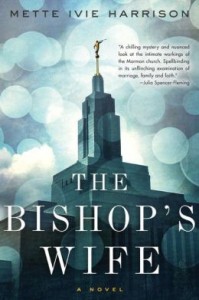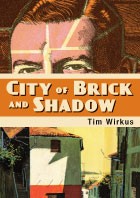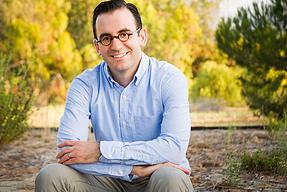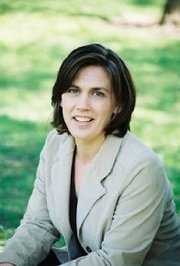
 Two of the most remarkable novels by Mormon authors
Two of the most remarkable novels by Mormon authors
in 2014 were mysteries–Mette Ivie Harrison’s The Bishop’s Wife, her first published adult novel after a career of YA fantasies, and Tim Wirkus’ debut novel City of Brick and Shadow. The authors graciously agreed to participate in a joint conversation. In today’s post the authors will discuss the intersection of the mystery genre and Mormon characters. Part two, which will include discussions on writing specific scenes, the impact of their academic training, and the role of literature, will come out later this week.
Q; Mormonism can be said to be a way of providing “the answers” and “the Truth”. Mystery novels are also usually about uncovering the truth. Mette’s novel ends with “the truth” behind the deaths largely revealed, while Tim’s left some key aspects unanswered. Do you think there is any relationship between the way you ended your novels and the way that Mormonism has impacted the way that you think? Or do you think the conventions of the novel you planned to write (including Mette planning for the book to be the first in a series) dictated the type of ending?
MIH: When I first wrote The Bishop’s Wife I had no real idea of a series and no real prospect of publication (my agent specifically told me not to write a book about Mormons because no one was interested in Mormonism and I had only had contacts in the YA field, not in adult mystery). I never thought of myself as a mystery writer, and didn’t plan out the plot of the book in advance. While I do follow a fairly standard mystery formula in the ending, I think that a lot of the book is thematically about the impossibility of finding answers to the big questions of life. A certain segment of readers have, for instance, been unhappy with the resolution to the second, older mystery because it isn’t absolutely clear that Linda’s version of events is the “true” one. I think that for me as a writer, my journey within Mormonism from being fairly devout to ending up on the fringes, is definitely in this first book and you’ll see it play out more clearly as the nine book arc for Linda’s character unfolds. I will say that my relationship with academia probably affected my desire to use a more genre-based plot than Mormonism itself. As a former professor of German literature and a recovering addict of a PhD program, I have a pretty strong antipathy toward literary novels, literary criticism, and the idea of “Great Literature” in general.
 TW: I think there is that common element in both The Bishop’s Wife and City of Brick and Shadow–an interest in unanswerable questions, like Mette says–that really comes out in their endings. And it’s crazy how much of a punch the mystery formula can pack, the desire it creates for resolution. Like Mette, I’ve been really interested in people’s responses to the book’s ending, who’s unhappy with it, who finds it frustrating (pleasantly or not), who likes it, who gets angry about it.
TW: I think there is that common element in both The Bishop’s Wife and City of Brick and Shadow–an interest in unanswerable questions, like Mette says–that really comes out in their endings. And it’s crazy how much of a punch the mystery formula can pack, the desire it creates for resolution. Like Mette, I’ve been really interested in people’s responses to the book’s ending, who’s unhappy with it, who finds it frustrating (pleasantly or not), who likes it, who gets angry about it.
For me, the ending grew most deliberately out of other, similar stories I’d encountered–movies like Zodiac and Picnic at Hanging Rock, and novels like Tana French’s In the Woods, and even a lot of Raymond Chandler’s stuff, where his protagonist, Philip Marlowe, might figure out the superficial facts of the crime, while larger existential questions remain unanswered.
Pinpointing how Mormonism has shaped my thinking–both in terms of literature and more broadly–is tricky because it’s such a chicken/egg question. I’m not sure if the vexing elements of Mormon culture and theology compel me because I’m a lifelong reader of a certain type of mystery novel, or if it’s the other way around, or a little of both, or another influence completely. I guess the short answer is that I wasn’t thinking of the ending explicitly in terms of my relationship with Mormonism.
 MIH: I also think it’s hard to figure out chicken/egg thinking in terms of truth within Mormonism. My father staged political debates within the family (of 11 children), but seemed surprised when as older teens and adults, the children turned those same strategies to Mormonism. It felt very natural as a development for us. I read my first mystery novels at about age 12 and was obsessed enough with Sherlock Holmes that I wrote my own book of trivia for the series. I read every thing ever written by Erle Stanley Gardner (leading my mother to ask if I didn’t want to try something else for a while). I wrote my own “final” stories of each detective, to resolve questions I felt had remained unanswered. But as an adult, I find I am deeply invested in a worldview that demands that dissonance exist without reconciliation. I admit, I am often trying to understand the point of view of those who politically are opposite from me (many in my own family), but ultimately have to accept that I only have my own experience.
MIH: I also think it’s hard to figure out chicken/egg thinking in terms of truth within Mormonism. My father staged political debates within the family (of 11 children), but seemed surprised when as older teens and adults, the children turned those same strategies to Mormonism. It felt very natural as a development for us. I read my first mystery novels at about age 12 and was obsessed enough with Sherlock Holmes that I wrote my own book of trivia for the series. I read every thing ever written by Erle Stanley Gardner (leading my mother to ask if I didn’t want to try something else for a while). I wrote my own “final” stories of each detective, to resolve questions I felt had remained unanswered. But as an adult, I find I am deeply invested in a worldview that demands that dissonance exist without reconciliation. I admit, I am often trying to understand the point of view of those who politically are opposite from me (many in my own family), but ultimately have to accept that I only have my own experience.
Q: Both of your books have “nosy” protagonists. That works well for a mystery, but it also can be seen as fitting with Mormonism, where we have such a strong tradition of being in each other’s business– which goes against the world’s trend of moving away from having any real contact with neighbors (although online nosiness has grown). Do you think that there is anything to that connection?
TW: Definitely. A lot of the fun in writing City of Brick and Shadow was having its main characters follow their directives as missionaries–ministering to and caring for the people they teach and baptize–to a place that’s both completely logical and totally unreasonable–becoming amateur sleuths on the trail of a vanished recent convert.
MIH: Yes, Linda Wallheim is pretty nosy. That’s partly because I’m writing a mystery novel with an amateur detective who has to *need* to know answers that other people simply shrug over and leave to the police. I’ve had readers respond that this is exactly the way that Mormons live and others think that it’s way over the top. I guess Mormons experience Mormonism differently, though I do think nosiness is more a reality of Utah Mormonism than Mormonism outside of Utah. It’s also true that Linda is a soon-to-be empty-nester and that makes her need to “mother” everyone in her ward a little twisted and extreme. Mormons are also institutionally instructed to be nosy, diligently doing home teaching and visiting teaching so that we know what’s going on in the lives of fellow Mormons. We have ward lists of phone numbers to contact people in emergencies. I think we are more involved in each other’s lives, for good or ill, than non-Mormon neighbors.
TW: I really liked that about The Bishop’s Wife–the fact that Linda Wallheim is investigating members of her own ward. These are people she knows, or thinks she knows, very well, and that does really fun, smart things both within the conventions of mystery novels and of Mormon culture. So many fictional detectives poke around worlds that are foreign to them, that they’re completely on the outside of. With Linda Wallheim, though, the stakes are much more immediate, much closer to home. That said, the PI element is still really fitting–and illuminating–because Linda feels like such an outsider in the ward she’s lived in for so long. Both that feeling and the secrets she eventually uncover really shake up perceptions of Mormons as homogenous, simple, and eminently knowable people (perceptions held by people both inside and outside of the church, I think).
Q: What was your philosophy about how much to explain about Mormons and Mormonism in your novel?
MIH: The first draft of The Bishop’s Wife had a LOT less explaining of Mormonism. I wasn’t even sure at that stage if I was aiming it at a national audience or not. I was working out my own relationship to Mormonism more than I was thinking about marketing concerns. I was trying to figure out if it was possible for a “good” Mormon to express the kinds of doubts that I had about Mormonism and still remain a member of the church in good standing. I suspect that I was also trying to answer the question I get from a lot of writer friends, from my agent, and from people I love who have left Mormonism–why are you trying to stay? Or in other words, what is good about Mormonism that makes it worth the attempt you are making?
Maybe it’s useful to explain that when I started writing TBW, I’d spent about five years as an atheist, practicing Mormon, trying to balance my feelings of obligation to my husband and family with my own depressive episode following the loss of a child. Up until just a few months before I sat down to draft it, I had been so successful at disguising my problems that my bishop had called me to be the Gospel Doctrine teacher and I’d finally had to explain that I didn’t think that was a good choice for me since I didn’t believe in God. He was actually very understanding and I feel like I still have a place in my ward, though it’s still a bit tentative. I am trying to be more open about the reality of my experience of Mormonism at this point, because hiding how I felt turned out to be deeply destructive to almost all of my relationships within Mormonism.
In a way, creating Linda was a very selfish artistic choice, but it has turned out to be a good one. Maybe the best art is on some level always selfish?
TW: Writing about other elements of Mormon life might require more explicit explanation, but with this novel I was interested in riffing on pre-existing perceptions of Mormon missionaries, who exist so vividly in the pop culture consciousness. Even though most non-Mormons probably don’t have a deep familiarity with missionary culture, there’s at least a basic operating knowledge–Mormon missionaries wear white shirts and ties, they’re young and cheerful, they knock on people’s doors, etc. Really, they’ve almost become stock figures, which raised a compelling narrative question for me: what happens if you plug one trope (the Mormon missionary) into an entirely different type of narrative (a mystery novel).
One outgrowth of that experiment was thinking of the dialogue between the missionaries as being similar to the jargon-filled conversations of officers in a police procedural–the audience probably doesn’t understand all the terminology, but that understanding isn’t essential to follow the narrative. Plus, the insider jargon lends an air of authenticity to the story.
MIH: I think Tim is right that Mormon missionaries have become a kind of pop icon and need less explanation outside of the confines of Utah and interior Mormonism than a bishop’s wife. I lived in Germany for a year, and though everyone knew what a Mormon missionary looked like, they all seemed to think that Mormons were an outgrowth of the Amish, that we lived without technology and in isolation from the rest of the world. I tried to explain repeatedly that my father was a computer science professor, but they couldn’t grasp it. Mormons equaled polygamy and long dresses, hair in braids, a la the movie Witness.
Q: How much did suggestions from your publisher and your expectations about your audience influence your choices? How do you feel about your choices now?
MIH: Once I sold TBW to Soho, my editor Juliet Grames asked me not only to add in more details about Mormonism, including explanations and occasional scriptural reference, but also whole scenes within Mormon culture. She wanted me to show a Mormon Sunday School class, Mormon worship service, a wedding ceremony, and so on. She’d have loved it if I had included scenes in the temple, as well, but I was trying to toe some invisible line between being respectful to other Mormons and to the leadership and being as open as I felt I could possibly be. I had no intention of writing an “expose” or a “hit piece,” though some readers have accused me of doing precisely that. I must say, I was very relieved when the video of Mormon temple garments came out just weeks before my book, which made what could have been a controversial scene much less so. I spent almost all of 2014 worrying if I was going to be excommunicated in the wake of Kate Kelly and John Dehlin’s excommunication processes, and trying to decide what I was going to do with that. I am pretty happy with myself for the choices I made ultimately. And so far, no death threats!
At the copy-editing stage, Juliet specifically asked the editor (who hadn’t seen the manuscript before) to flag places where we might have gone “overboard.” I think I cut almost 10k words at that point, though there were a couple of places where I (and Juliet) disagreed with the copyeditor. There have been readers who have reacted negatively to the amount of explanation in the final version of the book, but also a lot of readers who felt like I described the world very well. In some way, I think that my background as a fantasy writer influenced my choices to build a world deeply. I try not to stop the action to explain things, but I imagine Linda as a narrator who would be unable to think about any of the events around her without the context of Mormonism.
TW: In terms of the Mormon elements of the novel, suggestions from my publisher were pretty minimal–my editor mostly just asked for a few minor clarifications of unfamiliar terms I’d used. The biggest thing was a suggestion that I include reminders throughout the book of how young the missionaries are.
The influence of my imagined audience was much bigger. From the outset, I thought of the primary audience as being not necessarily Mormon, and that really steered the shape of the story. Even more than thinking about what kind of terminology to use and what kinds of explanations to give, I thought a lot about how the larger questions and conflicts of the novel might resonate both within Mormon culture and outside of it. That’s a decision I’ve been really happy with.
Watch for Part 2, coming out later this week.

This reminds me of a conversation in a writing seminar while I was writing the stories for my thesis at the U of Warshington. One of the other students dismissed the mystery genre as something that supposes there is truth in the world and we can find it. No one commented on the irony of stating there is no truth in a declarative sentence designed to convey truth, but I did say, “You ought to read The Real Cool Killers by Chester Himes. It has three solutions to the mystery.” It was my indirect way of suggesting that the matter of truth in mystery novels and elsewhere was a lot more complicated than he was dismissing. One solution is the official story, one is the solution that will satisfy the courts, and one ties the murder back to the prologue where a bartender (not named Ammon) grabs a sharp ax and slices the arm off a man who is threatening another man with a knife.
It’s a fascinating ending for a Mormon reader because Himes is asking how we can satisfy society’s demands for justice when the person those demands would fall upon is incapable of bearing up under them–so there’s a vicarious but not wholly voluntary punishment.
At the end Coffin Ed (or Grave Digger) tells the killer, “You’ve made yourself a hard bed and now you’re going to have to lie in it.” then offers some comfort and hope.
Regarding unanswerable questions I like Mette’s story about the Germans’ inability to grasp the idea of technological Mormons. I started listening to Job today. I’m listening in the order of the Tanakh, where Job is the third book in The Kethuv’im, after Psalms and Proverbs–interesting juxtaposition because Job is full of dueling proverbs, most of them inadequate to answer the questions they’re put forth to answer.
It’s long seemed to me that God’s question to Satan, “Hast thou considered my servant Job,” may be paraphrased as, “I suppose you’ve got your eye on Job and you want to destroy him.” Seen this way the prologue is not a bet between God and Satan, but God’s way of trying to limit the damage to Job. That reading can be very unsettling to the sense that God is all-powerful, but try reading the ending as a scene of healing and restoration rather than a rebuff to Job. Our perspective has a lot to do with whether we see a question as answerable or not, and God gives Job a vast new perspective.
God may not be able to prevent Job from suffering, but he can do something far vaster than Satan in healing and restoring Job.